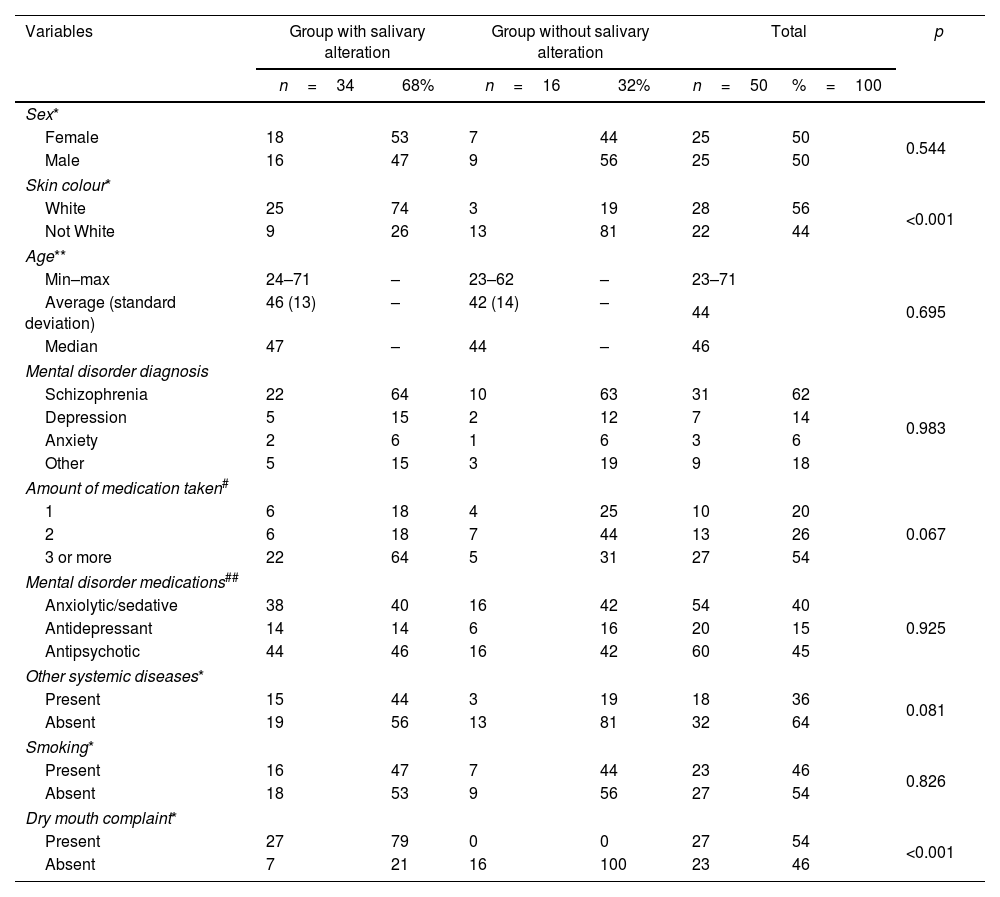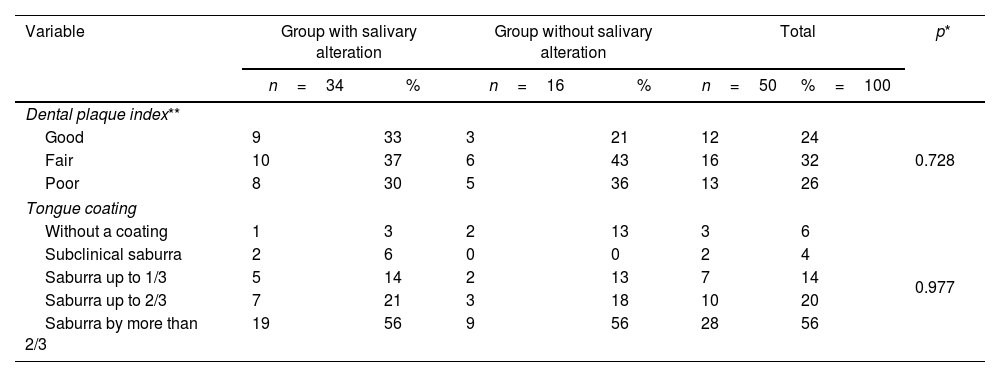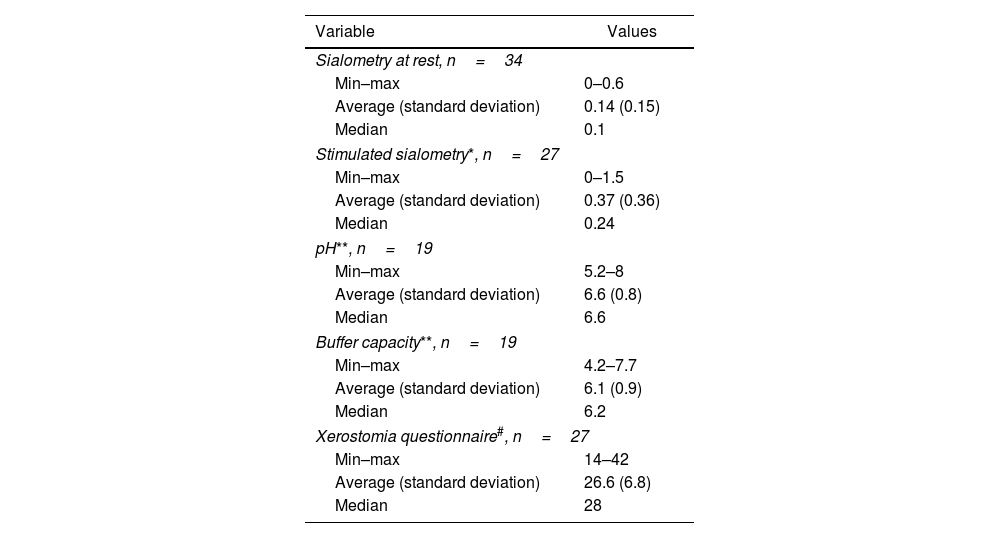Treatment of mental disorders is carried out through of drugs that are associated with hyposalivation. The study assessed the oral and salivary profiles of mental disorder patients undergoing drug treatment.
Material and methodsA cross-sectional study, it involved participants over 18 years with mental disorders. Data collection included demographic, clinical, and oral health assessments, such as salivary flow, pH, and buffering capacity analyses.
ResultsOf the 50 participants, 68% exhibited salivary alterations, with predominance of women. Schizophrenia was prevalent, with most patients taking three or more medications daily. Comorbidities were more common in the salivary alterations group. Salivary flow at rest was significantly lower in the group with alterations. While plaque index and tongue coating were similar in both groups, stimulated sialometry was lower in the alteration group.
ConclusionsXerostomia complaints were prevalent, indicating salivary dysfunction in psychiatric drug users, impacting oral health parameters like plaque index, tongue coating, pH, and buffering capacity.
El tratamiento de los trastornos mentales se lleva a cabo a través de medicamentos que están asociados con la hiposalivación. El estudio evaluó los perfiles orales y salivales de los pacientes con trastornos mentales sometidos a tratamiento farmacológico.
Material y métodosUn estudio transversal, que involucró a participantes mayores de 18 años con trastornos mentales. La recopilación de datos incluyó evaluaciones demográficas, clínicas y de salud bucal, como el flujo salival, el pH y el análisis de la capacidad de amortiguación.
ResultadosDe los 50 participantes, el 68% presentó alteraciones en la saliva, con predominio de mujeres. La esquizofrenia fue prevalente, con la mayoría de los pacientes tomando tres o más medicamentos diarios. Las comorbilidades fueron más comunes en el grupo con alteraciones en la saliva. El flujo salival en reposo fue significativamente más bajo en el grupo con alteraciones. Si bien el índice de placa y el recubrimiento lingual fueron similares en ambos grupos, la sialometría estimulada fue más baja en el grupo con alteraciones.
ConclusionesLas quejas de xerostomía fueron prevalentes, lo que indica disfunción salival en usuarios de medicamentos psiquiátricos, lo que afecta los parámetros de salud oral como el índice de placa, el recubrimiento lingual, el pH y la capacidad de amortiguación.










